For the first time in nearly 40 years, one of Nintendo’s most famous female heroines is now the protagonist in her own story.
The Legend of Zelda: Echoes of Wisdom stars the game’s namesake, Princess Zelda, as the main, playable character in her own video game.
For the uninitiated, players have typically traversed through the Zelda universe as the sword-wielding, elf-like warrior Link.
With more Australian women gaming than ever before, one expert says the “emancipation” of famous video game heroines is “way overdue”.
One woman’s quest to save the hero
The Legend of Zelda is one of the biggest video game franchises, racking up more than 140 million sales since it was launched in 1986.
Last year’s release, Tears of the Kingdom, sold 10 million copies in just three days, according to the Japanese gaming giant.
Throughout the game’s various iterations and timelines, Link has always been the central protagonist, initially tasked with saving Zelda.
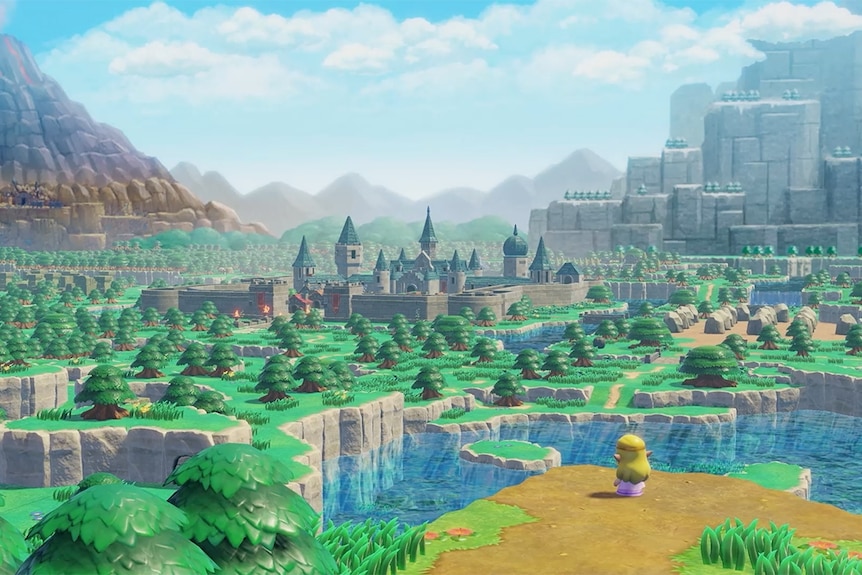
Zelda recreates the famous shot of Link overlooking the kingdom of Hyrule. (Nintendo)
Over time, Zelda played a bigger part in battles thanks to her powers and wisdom, eventually becoming an equal to Link – but being tasked with saving him is new territory.
Ro Auman came across the Zelda series in 2021 and has logged more than 1,000 hours across the last two releases: Breath of the Wild and Tears of the Kingdom.
The 26-year-old marketing specialist says the “lore and universality” is her favourite part of her Zelda experience.
“The character design and score across games has built such a unique and iconic game experience that invokes such nostalgia in its players,” she says.
But Ms Auman says it has always been exhausting to explain that, until now, the series has never really been about Zelda.
“Ask any Legend of Zelda fans who have had to explain the game to someone who doesn’t know it: no, you’re not actually Zelda. You’re Link, her sworn swordsman. No, you won’t ever play as Zelda. In fact, in Breath of the Wild, you barely even see her. So, why is it called Legend of Zelda, then? Good question.”
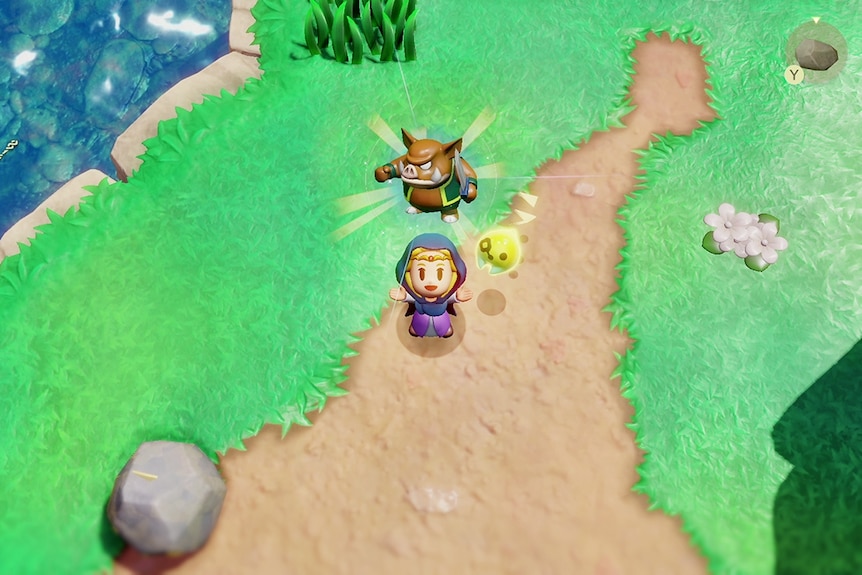
Zelda is left to her own devices in the latest release from the franchise. (Nintendo)
In Echoes of Wisdom, citizens of the kingdom of Hyrule are being swallowed up by mysterious purple portals appearing in the ground – including our usual hero Link.
“This time around Link has vanished and it’s up to Princess Zelda to step into the protagonist’s role,” series producer Eiji Aonuma says in the game’s trailer.
While Link wields a sword and a shield, Zelda instead has a magic wand and teams up with a fairy called Tri, a yellow blob that floats nearby in a way that’s reminiscent of Ariel’s sidekick Flounder.
ABC Gamer presenter and producer Gemma Driscoll says it is “always really cool to shake up an existing formula into something different”.
“I like seeing the diversity in styles of games and not kind of getting the same thing over and over again,” she says.
The game’s design is also more cartoonish in style, in line with the 2019 release The Legend of Zelda: Link’s Awakening, and similar to the popular “wholesome” video game Animal Crossing.
“I think the rise of the cosy game aesthetic is almost boxing [in] the idea that women can only be interested in these kinds of games, and they’re only interested because they’re non-competitive — and that’s just not the case,” Driscoll says.
“It’s just another awesome facet to the community for you to enjoy. You don’t have to be one thing, you could enjoy this and all the other games out there.
“If you’re not quite sure what kind of games you’re into, here’s a cool point you can jump off at.”
It’s Peach’s time
Earlier this year, Princess Peach also starred in her own game, with plumber-turned-white knight Mario nowhere to be seen.
In Princess Peach: Showtime!, Peach steps into the spotlight by playing different roles in various plays to save her kingdom’s theatre from a mysterious masked villain.
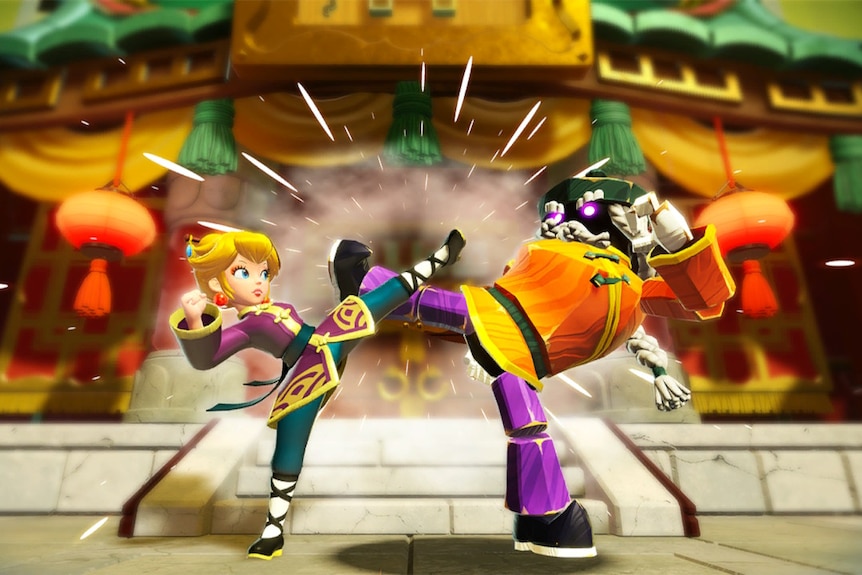
Peach’s latest game sees her get combative while also baking cookies and ice-skating. (Nintendo)
It’s the first time Princess Peach has headlined her own game in nearly 20 years, with her previous game centring around having the superpower of four emotions — joy, gloom, rage, and calm.
In her latest adventure, Peach transforms into 10 different roles, including Kung Fu Peach, Detective Peach and Mermaid Peach.
“I thought it was really cool to have a combative Peach in Swordfighter Peach, but then also there’s, like, Cooking Mama Peach in Patisserie Peach,” Driscoll says, adding how it highlights there are “so many ways to tackle different problems with different skills”.
“I think showing that versatility through Peach of all people, one of the most iconic female characters, is really cool.”
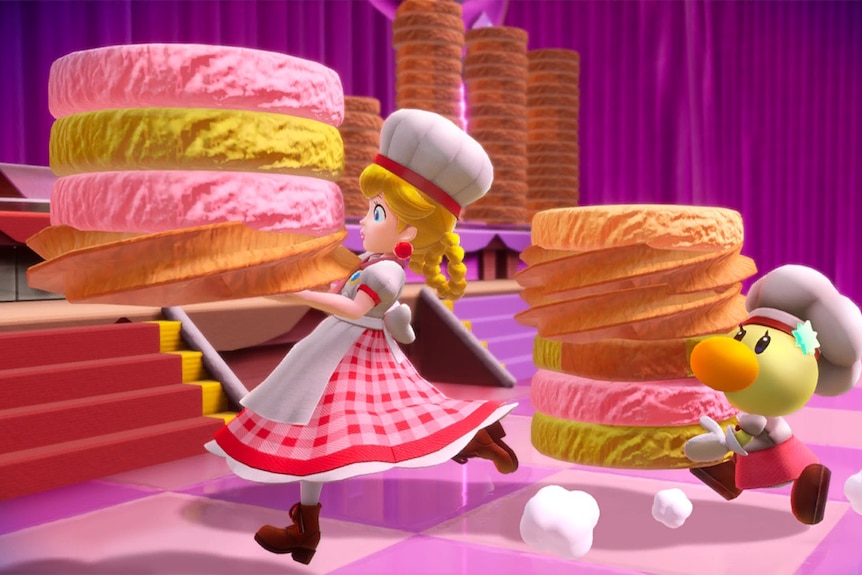
Gemma Driscoll says the counter-narrative to the damsel in distress trope has become less one-note over time. (Nintendo)
Driscoll says the “you can be anything” messaging in Princess Peach’s latest game is reminiscent of the way Barbies were originally marketed.
“I think it’s nice messaging to give to young girls,” she adds.
Driscoll also notes the way female characters are written and portrayed in video games has gradually shifted over time.
“I think in the 80s and 90s there was this counter-narrative to the damsel in distress that made female characters quite cold and emotionless, they were tough and they were no-nonsense,” she says.
“I can see the counter to the counter, but I think the whole point is you don’t have to be one thing. We should be encouraging young girls, and young gamers, that they can be anything.
“You don’t have to be a one-note, one-faceted individual. You can have layers and that’s actually a good thing.”
Representation ‘way overdue’
While a teenage boy might be the stereotype when imagining the average gamer, the data paints a far more diverse picture.
According to the Australia Plays 2023 report, 81 per cent of all Australians play video games, and 48 per cent of Australian players are women – the highest proportion observed since the research series started nearly 20 years ago.
The average age of players in Australia is 35, with the survey also finding that after age 55, women play video games more than men.
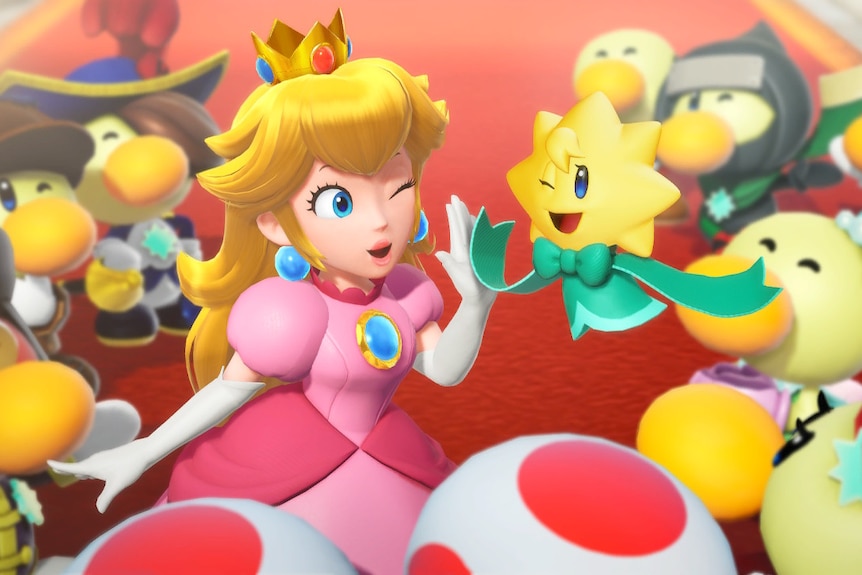
Jeff Brand says Zelda and Peach becoming the protagonists in their own narratives is “way overdue”. (Nintendo)
Jeff Brand from Bond University is one of the authors of the Australia Plays research series and says the role and portrayal of women in games is “just so important”.
“When we started this research […] way back when in 2005, the representation of women in games was less than the representation of robots in games,” he says.
Professor Brand says there are multiple reasons behind the increase of women getting into gaming, including the accessibility of devices and the “maturity of society”.
“I do believe that we are reaching a moment when we are challenging traditional assumptions and stereotypes and we see many more women ascending to roles of importance and power, whether it’s in board rooms or in politics or in social organisations,” Professor Brand says.
“For Zelda, in particular, and Peach […] I think what we’re now seeing is a kind of emancipation and it’s way overdue.
“And remember that Nintendo is a Japanese corporation, and Japan has had, like many countries around the world, a stop-start equality and liberation agenda.
“And I think it’s now starting to hit the designers and developers of games that this is the right moment.
“Maybe it’s overdue, but it’s the right moment now.”











